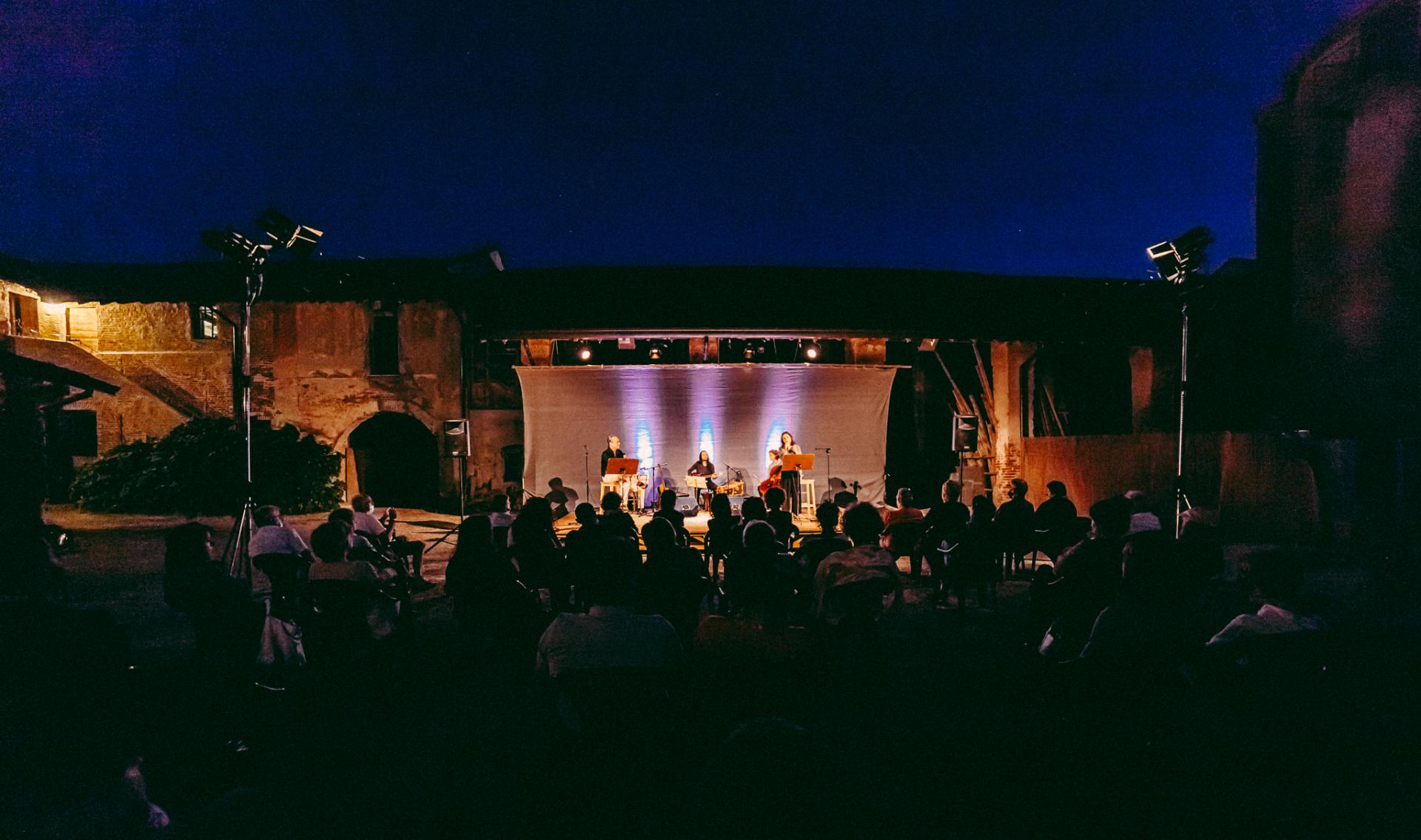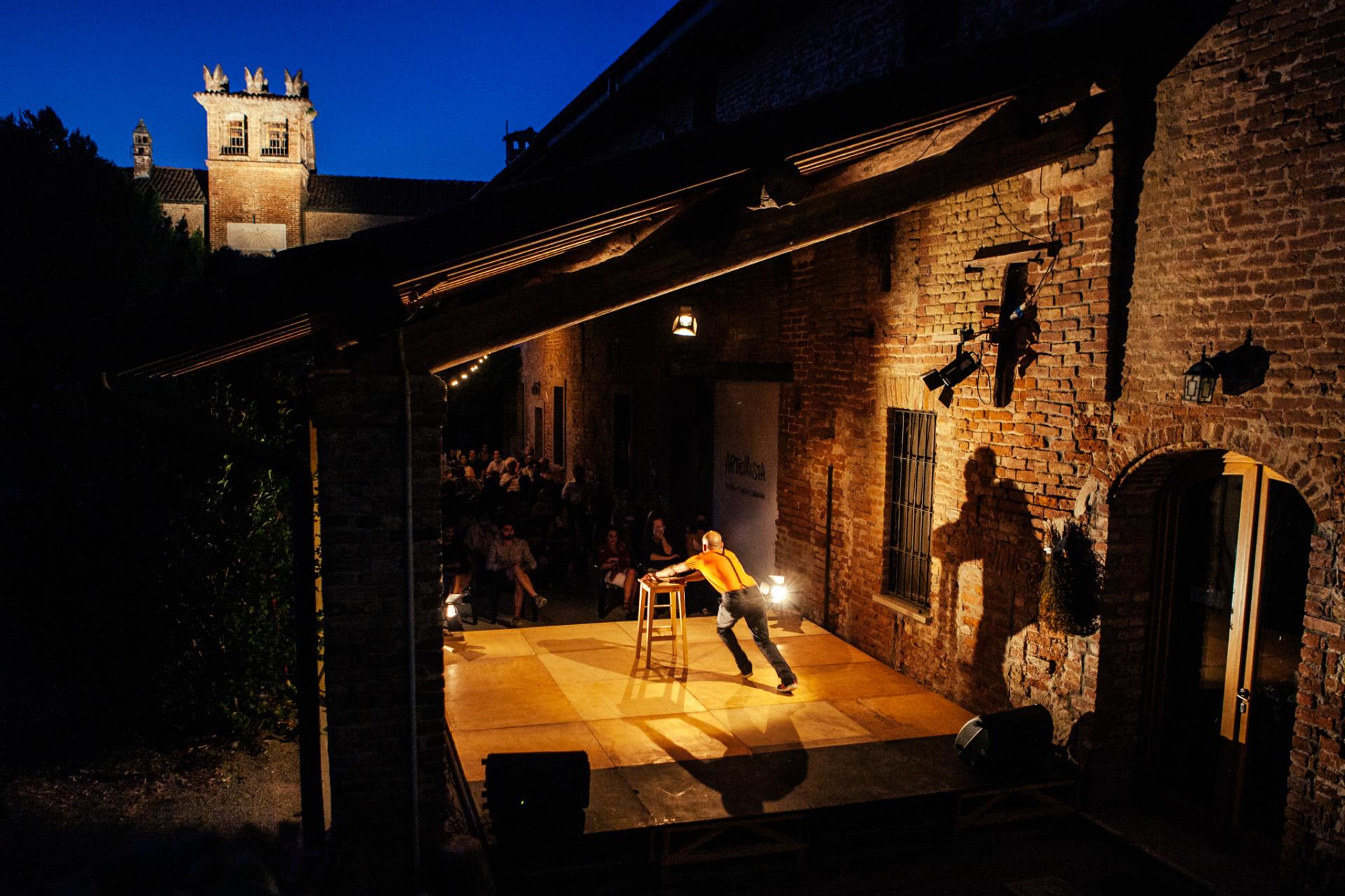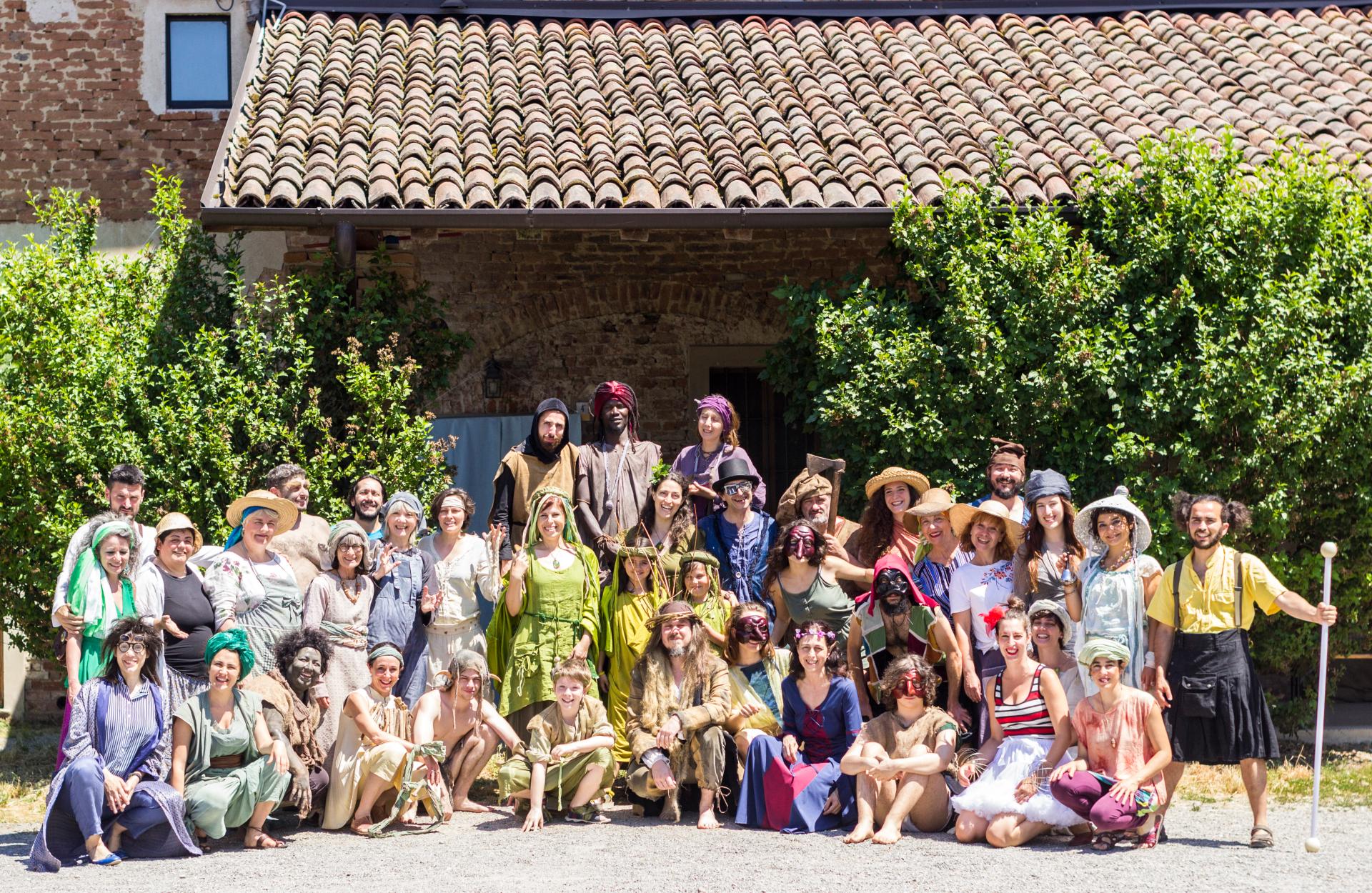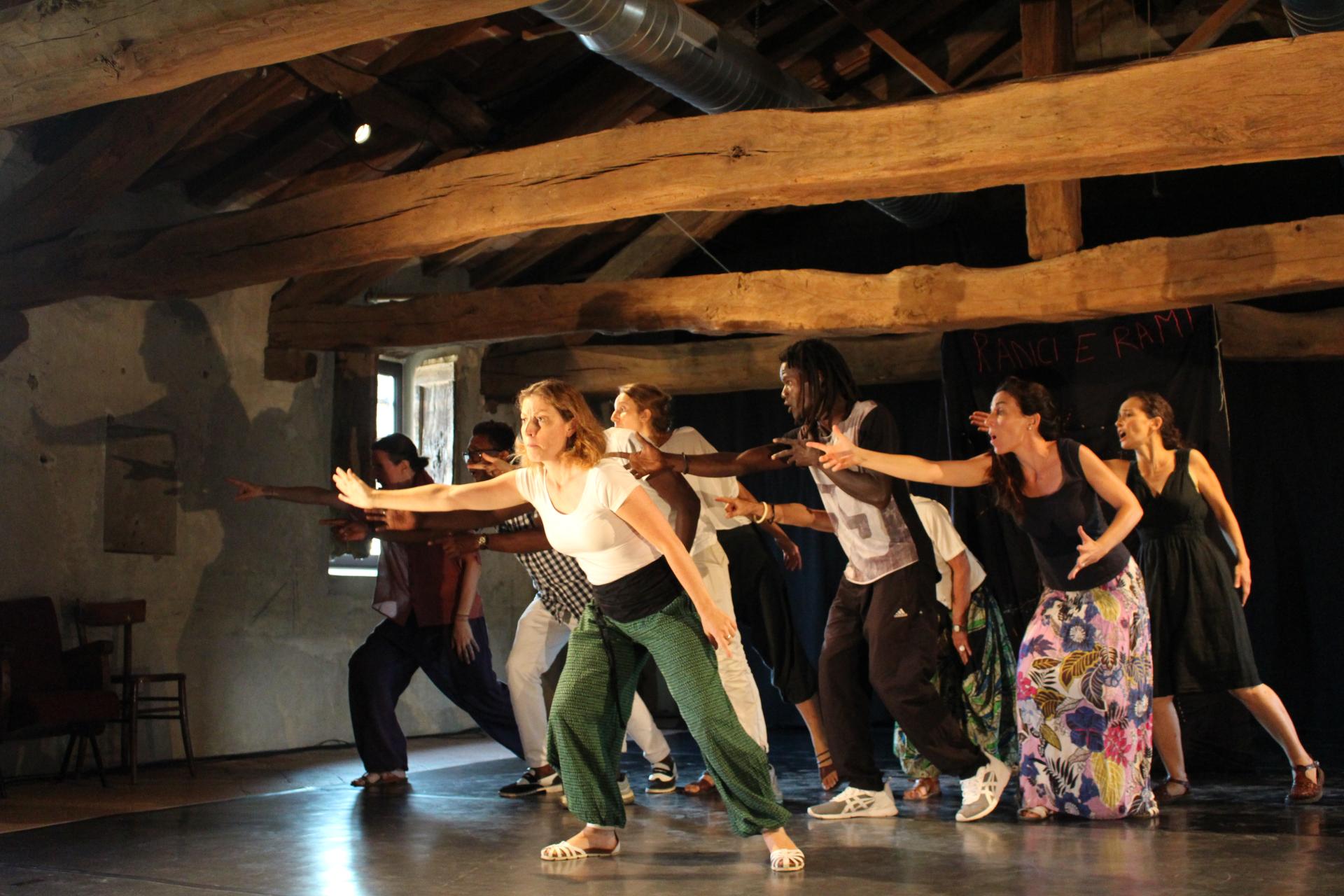Artemista cultural centre
Basic information
Project Title
Full project title
Category
Project Description
Artemista cultural centre was born as a regeneration project and it’s now a regenerative space:
an old farmhouse turned into a model centre of sustainability with multifunctional spaces where art, culture and attention to the environment and the territory coexist.
The cultural centre is a crossing point of realities mixing the local and the international levels, it’s an attractive place able to collect people and projects in a decentralized rural area.
Project Region
EU Programme or fund
Description of the project
Summary
Artemista cultural centre was born from the cultural and social projects the association has developed and is designed as a house for artistic and cultural realities. The association was established in 2004 by artists with different backgrounds working together since the early 90s and feeling the need to develop projects mixing different languages: theatre, music and visual arts. The cultural centre has developed also as a response to a political season of cuts to culture by choosing to sustain itself with a funding mix based on multiple activities and on a choice of geographical decentralization. The funding mix also allows the centre to grow and improve its offer. Different realities can exchange ideas and skills during residences made possible by the hostel and spaces equipped for production. The cultural centre is in the village of Spessa (PV) at the “Cascina Castello,” a farmhouse with adjacent buildings dating back to the X century. The farm was renewed using green buildign tequinques and focusing on high energy efficiency. Workers, but also members of the association and volunteers from all over the world took part in the restoration work.
The association manages the cultural centre (multi-use rooms, recording studio and hostel) and the different activities taking place in there. It hosts international artistic residences, organizes festivals and develops interdisciplinary projects engaging also the local community.
The association projects have been funded by the EU (Youth and Erasmus Programme), Regione Lombardia, Fondazione Cariplo and other public and private bodies. Many projects deal with the community engagement (especially young people) and the diffusion of a high quality cultural proposal working with a wide network of associations and municipalities. Artemista deepen also the topic of social and cultural innovation taking part in Tandem Europe 2017/18 and being a reference point for other realities like Fondazione Cariplo, Fondazione Bosch, MitOst
Key objectives for sustainability
Artemista designs its growing path seeing as not detachable the environmental and the economic sustainability of the cultural centre that was thought, designed and realized as a sustainable and inclusive space where artists from different disciplines can find a place for new productions mixing different languages. The centre also hosts tourists and pilgrims of Via Francigena as well as groups of students and other social organizations, all these people can appreciate the way in which the centre is managed and reflect on the importance of its sustainability.
Lower the structure environmental impact and use renewable energetic sources was the starting point of the farmhouse restauration. Advanced and green materials were used and the restauration was led in order to gain the best energetic efficiency of the whole structure and to reduce the wastefulness of resources. Solar panels were installed on the roof, the underfloor heating system uses heat pumps, the thermic isolation of the walls was made using wood fiber and the one of the roof with granular cork. All these details make the cultural centre more sustainable and facilitate a reduction in the expenses linked to its maintenance.
Since the beginning of the activities, including the restauration of the building, Artemista looked for a funding mix that allows the combination of different economic sources. This choice makes the cultural centre more sustainable: depending on different sources allows to lower the risk linked to the loss of one of them.
Grants from private and public bodies are really important in the development of new activities and improvement the cultural centre offer.
Considering the whole structure and organization of the cultural centre a mix of advanced technologies and scientific skills stands on the ground of the production of art and culture to make all the process more sustainable and integrated.
Key objectives for aesthetics and quality
As stated before Artemista Cultural centre is thought to be the house for artists of different disciplines that can find in this place multi-functional rooms fully equipped for theatre, music and dance production, a recording studio and a hostel with private and shared spaces. The cultural centre, even if it’s only 60 km far from Milan, is immersed in the countryside near the Po river and close to the Oltrepo hills so hosts can walk in nature taking their time and escaping from the frenetic rhythm of the city.
Artists can here stay in a totally immersive atmosphere, leaving back everyday actions and dedicating fully to art creation. This is possible because of the inspiring nature surrounding the centre (25 bikes can be used by hosts too) and the beauty of the ancient location of the farmhouse together with the comfort of the place and all the necessary equipment for productions (there is also a lab for scenography making).
The strong link between the cultural centre and the territory brought the association to develop community projects aiming at the audience development and the engagement of the local community. Performances have been created in an innovative way so to dialogue with the territory, give value to traditions and create link with the international level too. The link between local and international is developed thanks to EU projects and it was deepened during the Tandem project “Local, meet International: New Participatory Methods in the Rural Spaces”.
Working with artistic languages and creating multidisciplinary performances allows the centre, the association and the hosted artists to implement the aesthetic side of the whole project. It’s important to underline how the sustainability of the structure is fundamental and functional to develop new artistic opportunities since it makes easier to manage the whole centre.
Key objectives for inclusion
Artemista is a shared project and we can see how inclusion is acted at different levels.
The restauration of the structure involved many volunteers from all over the world. International Civil Service camps took place at the farmhouse and volunteers were essential to bring on all the work. Together with volunteers many Artemista associated people have been involved in this period. The collaboration of all this different people has been fundamental to reach the final result and allow the cultural centre to start hosting artists and develop their artistic activities and residencies. The hostel also started working and tourists and pilgrims can now enjoy their stay here in Spessa. The hospitality follows the rules of ethic and slow tourism.
The inclusion of the local community has always been a focus point of the association’s projects, the real engagement of people allows the association to gain trust on the territory and bring on the audience development. This is possible only acting in an inclusive way, listening to the territory’s needs and wishes.
It’s important to underline that the cultural centre is along the Via Francigena, a really famous route of pilgrimage linking Canterbury to Rome and Santa Maria di Leuca. The hostel is then inhabited by artists in residency, but also by numerous pilgrims. All the hostel spaces have been designed and realized to be completely accessible by people with physical handicaps, so the structure is inclusive for all its hosts.
Artemista and other partner organizations develop projects with people with special needs. Groups are hosted at the cultural centre where they also take part in artistic workshops like theatre and music ones.
Results in relation to category
Artemista cultural centre applies for the category “Regenerated urban and rural spaces”.
The regeneration process that involves the farmhouse had an impact both on the building and on the local community with concrete results -visible in the development and improvement of the building and in the community participation.
At the beginning, when the Association started working on the territory, the farmhouse was really damaged by the time, but it had all the necessary requirements to became the location of the cultural centre with big spaces to transform into multi-functional rooms, a big courtyard to organize outdoor events and other spaces to turn into the hostel.
The regeneration process however started from people and from the local community engagement: the need to have a physical headquarter and a place to develop activities derived from the many network projects the association have been developing on the territory.
It is possible to say that the realization of the cultural centre is the result of the winning impact Artemista’s projects have had on the territory in terms of cultural and social enrichment of the area.
Year by year the structure has been improved by fixing new spaces and enriching the equipment functional to theatre, music and dance productions.
Different kinds of projects are taking place around Artemista and starting from local network the cultural centre is now more and more engaged in international projects.
Another important result to measure the positive impact Artemista has on the territory stands in the fact that the cultural centre is really well known on the territory and is able to convey more than 800 people as audience in its community performances. Artemista artistic proposal is also all well known in the nearby area bringing performances, shows and other high quality educational and artistic projects in rural and remote areas surrounding the centre.
How Citizens benefit
The process of restoration of the building was led in a participatory way. Starting from people directly involved in Artemista’s project more and more people joined to help.
Fundraising events and the storytelling of what was going on have been fundamental to reach more and more people and to convince them to support the centre and take part in the activities.
People raising activities have been led and still today the cultural centre is the place from where community performances stem. It’s really important to develop projects that can have resonance on the territory.
Two big game theatre performances take place every year, stories and actions develop from the need of the community and from its history. The cultural centre is the base to develop the performances through community laboratory, but it also became -together with the village- the place hosting up to 800 people taking part in the itinerant performances.
As another example, in 2018 for the European Year of Cultural Heritage, Artemista organized a series of artistic residencies with companies using the language of participatory art, people affected by the project are also the one benefiting from it.
Even nowadays people and associations that took part in the restoration works are living the cultural centre bringing here their new projects.
Artemista has been awarded by Avanzi (Milano) as one of the examples of “Sustainability is Human. La sostenibilità sta dove stanno le persone”, a project of recognition, engagement and dissemination of bottom-up sustainability experiences in Italy in 2019. This prize is a great result since it underlines the strong connection between the cultural centre and the community considering also the way in which activities are developed and their economic and environmental sustainability.
Artemista is part of the network “Segnali di futuro – I cambiamenti sono intuizioni ostinate” dealing with urban and rural regeneration with a strong attention to communities.
Innovative character
The aim of Artemista cultural centre is to bring a high-quality cultural proposal in a decentralized and rural area lacking of opportunities and cultural offer. It’s challenging and innovative to stay and inhabit this territory developing community projects that mix different artistic languages and that are able to convey international artists in here.
The way in which the cultural centre has been developed put together the historical dimension with the innovative one: the general structure of the farmhouse has been maintained while completely changing its functions. In the restauration work innovative and green materials have been used to lower the whole structure impact. It’s always been a focus point of the cultural centre to pay attention to the environmental impact of the structure looking at innovative practices that can constantly improve it.
Another innovative characteristic of the cultural centre is the focus on multidisciplinary projects. Artemista aims at developing projects mixing different artistic languages to boost connections and contamination among artists in residency.
All the new productions use contemporary languages.
The work with the territory as well as the many ongoing projects and partnerships make Artemista well known at the international level and the structure recognised as an example of cultural centre located in a remote area able to contribute to the international scenario and debate about new innovative way of producing and diffusing culture in a challenging context.
It's not so common to collect in a single hostel artists in residency as well as tourists, hosts and pilgrims of Via Francigena. This place sharing favour also the mutual knowledge and the connections between people.




